
views
- Cancel out redness caused by acne or pimples by applying a green-tinted concealer under your regular foundation.
- Reduce the appearance of overall skin redness by using even coats of foundation that match your skin tone.
- Treat skin redness and imperfections by avoiding skin care products with harsh chemicals and wearing SPF 25+ daily.
Picking a Concealer
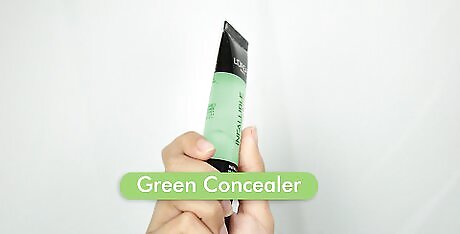
Choose a green-tinted concealer to cancel out redness. Color-correcting concealers cover up red spots resulting from acne breakouts, scars, or skin conditions like rosacea. When choosing a color-correcting concealer, opt for those that are green-tinted; green is the opposite of red on the color wheel, which is why a green concealer offsets and neutralizes red spots. Apply the concealer to the area you wish to neutralize and blend the edges for an even finish. Work with thin layers of product to avoid giving your skin a green hue.

Use high-end concealers for more coverage. Inexpensive products rarely help conceal large areas of red or dark spots because their formulas are usually weaker, thin, and/or more runny. High-quality concealers, such as the Dermablend Cover Care Concealer, or those designed to deliver “extra coverage,” are heavier and made to cover darker spots, acting as a concealer and a foundation at the same time. Take a small amount of the product and rub it between your fingertips to soften it. Apply the concealer directly over imperfections. Allow the product to dry before applying additional layers (if needed). Set each layer of product with setting powder.
Concealing Red Spots with Makeup
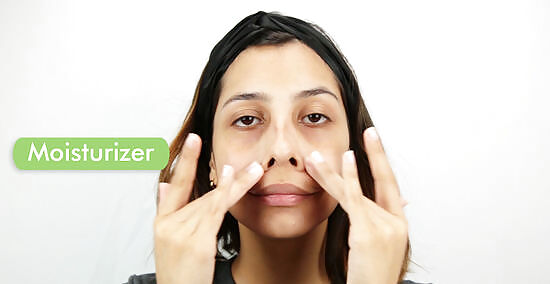
Use a mattifying daily moisturizer to soften your skin. Daily moisturizers with a matte finish help fight the appearance of breakouts by removing excess oil and calming the complexion. Wash your face and pat it dry, then apply moisturizer to your entire face Let it dry completely before applying any other products or makeup.

Apply foundation to even out your skin tone. Foundation is used to cover up uneven skin tones, red spots, or acne lesions. Applying concealer before your foundation is also an option; however, adding foundation first allows you to really see where you need more coverage. Prep your skin with a primer to soften lines, dry patches, or rough areas. Apply a dime-sized amount of foundation to your hands and use your fingers to dot it on your forehead, nose, and chin. Smooth the product all around with a makeup brush or beauty blender, working from the center outward.
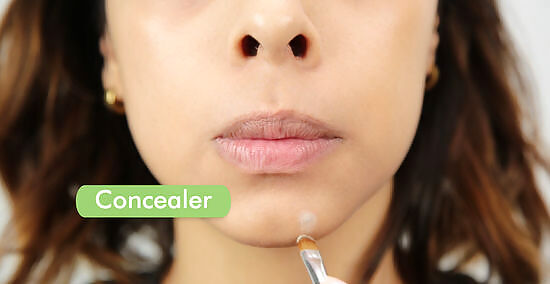
Dab on concealer for added coverage. Use a high-end concealer to achieve a flawless result. The best concealers counteract discolorations, lighten shadows, disguise hyperpigmentation marks, and work together with your foundation to achieve an even skin tone. Dab the concealer onto discolorations with a clean finger, brush, or sponge. Blend until there are no lines. Continue adding small, thin coats of concealer until the blemish or imperfection is concealed. Pro Tip: Don’t apply liquid or cream concealers over powder foundation. If you use powder foundation, apply the concealer first and allow it to dry before putting on the foundation.
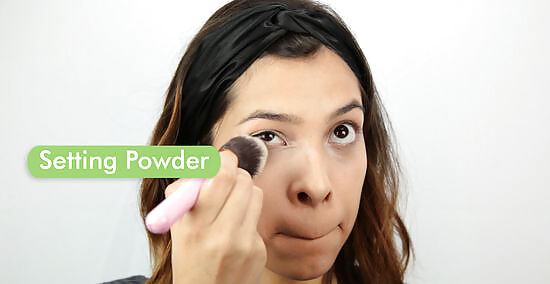
Set your makeup with a setting powder. Once you’ve reached the amount of coverage you’re looking for, finish your base with a translucent powder. This helps set your foundation and concealer and makes it last longer. Apply setting powder with a fluffy brush to areas where your face gets oily—the bridge of your nose, chin, and forehead. Pro Tip: There are differences between loose and pressed powder. Loose powder gives a more natural look and is usually translucent, whereas pressed powder gives more coverage and comes in a variety of skin tones.
Treating Red Spots
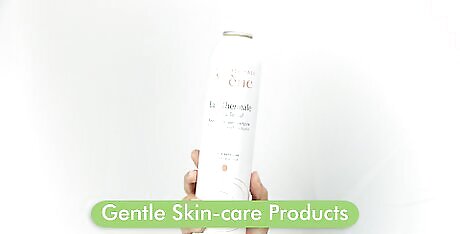
Use only well-formulated, gentle skin care products. Following a skin-friendly skin care routine can help reduce overall redness, breakouts, and inflammation. Opt for skin care products that use gentle ingredients and aren’t abrasive on your skin. Avoid products that contain: Alcohol Camphor Fragrance Glycolic acid Lactic acid Menthol Sodium laurel sulfate Urea
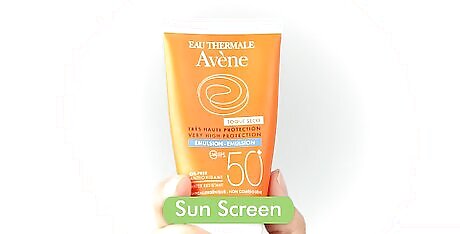
Use a sunscreen or moisturizer that has SPF 25+ every day. Unprotected exposure to UV light hurts your skin's ability to heal. This means the red marks from acne can last longer or even worsen. Protecting your skin from UV exposure every day is critical to fading discolorations. Apply sunscreen daily. Reapply sunscreen or SPF at least every 2 hours if skin is exposed to sun.

Use products with antioxidant Vitamin C and retinol to heal your skin. These ingredients help protect your skin from further damage, while also speeding up its ability to heal. Vitamin C and retinol help reduce inflammation, so add toners, serums, and/or moisturizers formulated with these ingredients to your regular skin care routine. Some people may experience a delayed sensitized reaction to retinol. Pay close attention to how your skin responds and adjust accordingly. If sensitization occurs (redness, flaking, tenderness, or drying of skin), reduce frequency of use or mix one pump of the retinol treatment with your favorite serum or moisturizer.

Consider using skin lighteners to reduce redness. Skin-lightening products and natural ingredients may help reduce the appearance of red or dark spots; however, they also come with a few risks. Skin-lightening agents can dry out and damage your skin, so talk to your dermatologist before starting an over-the-counter or at-home treatment. If approved, here are some at-home lightening treatments you can try: Turmeric contains a substance called curcumin that lowers the rate of melanin production and might reduce redness and fine lines. Mix turmeric powder with lemon and cucumber juice and apply to the skin. Leave in for 15 minutes and rinse off. Licorice and lemon juice may help lighten skin thanks to skin-activating compounds. Mix a small amount of licorice extract powder with distilled water, or apply lemon juice to the imperfection.
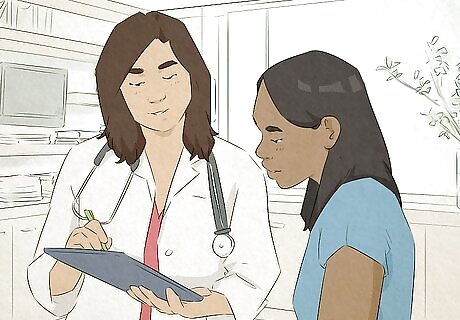
Ask your doctor for advice or medical treatments. Sometimes, makeup and at-home treatments aren’t enough to fully cover or remove face redness. If you’re growing frustrated, contact your dermatologist. They’ll be able to provide personalized advice and ensure that you get the proper care your skin needs. If you have rosacea, your doctor may suggest microdermabrasion to reduce overall redness. If the redness is caused by inflammation, your doctor might recommend a prescription medication or topical cream.














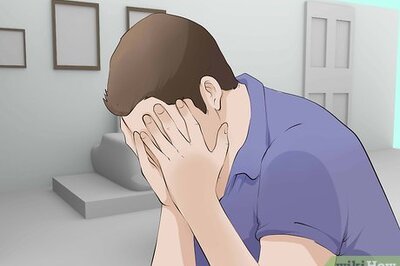




Comments
0 comment